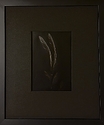Steve Goldstein
Subscriber
Although I've never done it, I can understand how preflashing black-and-white paper can be a useful tool for some images. It can be done with an enlarger as the light source, but making multiple prints means a lot of negative handling as it has to be removed to preflash and then replaced to expose every print. I don't have the room for a second enlarger, even a small one, for preflashing and proofing. RH Designs sell the Paper Flasher II, which appears to use white light and has provision for filters, but I'm not aware of any similar unit.
Now that I've retired from a long career in analog and mixed-signal circuit design I've been thinking about building myself something similar to the RH Designs unit, although perhaps with less fancy timing capabilities. The basic circuit to current-drive an LED string is straightforward and is something I did 20 years ago when I built myself an LED safelight. What I'm wondering is whether I should include three sets of LEDs: white, green, and royal blue. It's not really any harder than doing a single color, just more LEDs and the ability to switch between them.
For those of you who preflash variable contrast paper, do you use green light, blue light, white light, or filtered light?
Now that I've retired from a long career in analog and mixed-signal circuit design I've been thinking about building myself something similar to the RH Designs unit, although perhaps with less fancy timing capabilities. The basic circuit to current-drive an LED string is straightforward and is something I did 20 years ago when I built myself an LED safelight. What I'm wondering is whether I should include three sets of LEDs: white, green, and royal blue. It's not really any harder than doing a single color, just more LEDs and the ability to switch between them.
For those of you who preflash variable contrast paper, do you use green light, blue light, white light, or filtered light?





